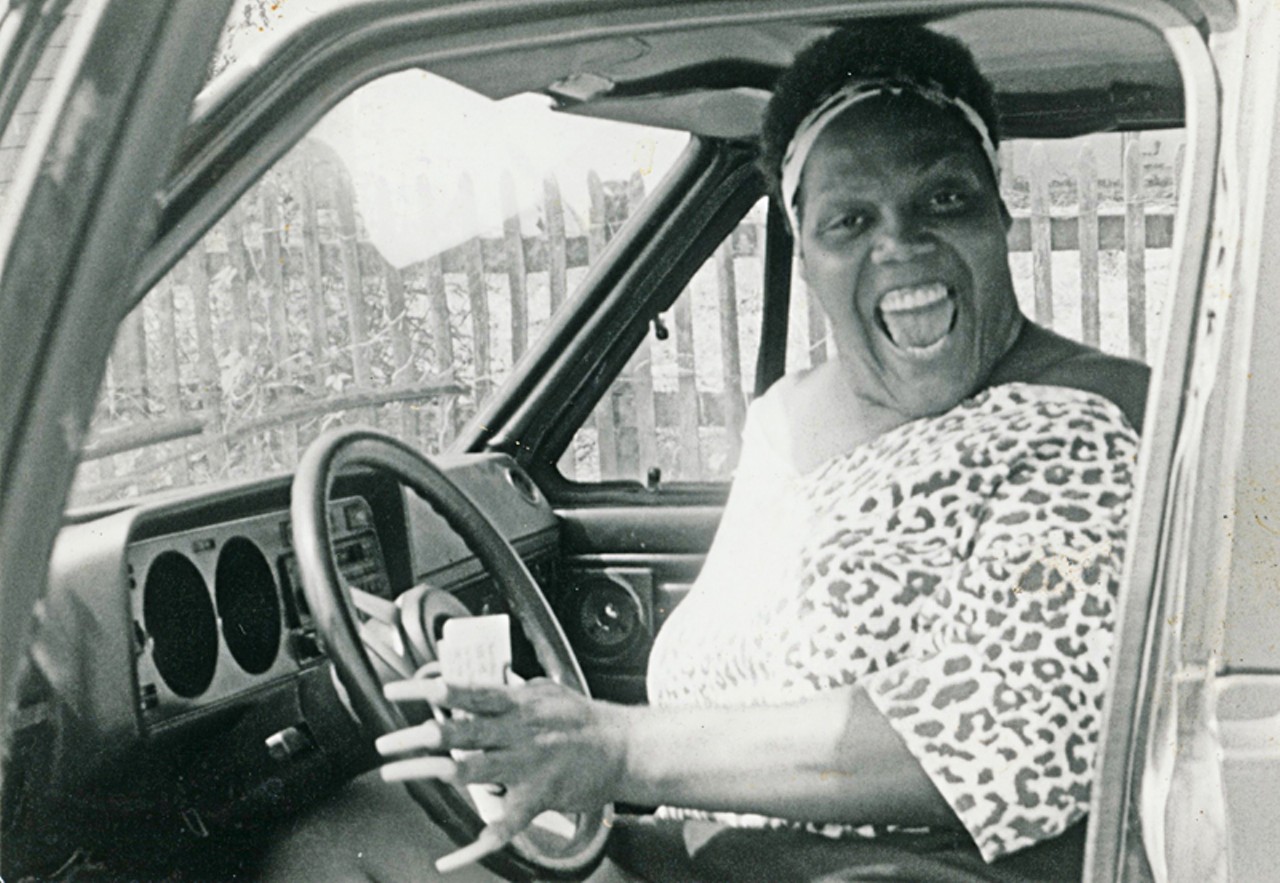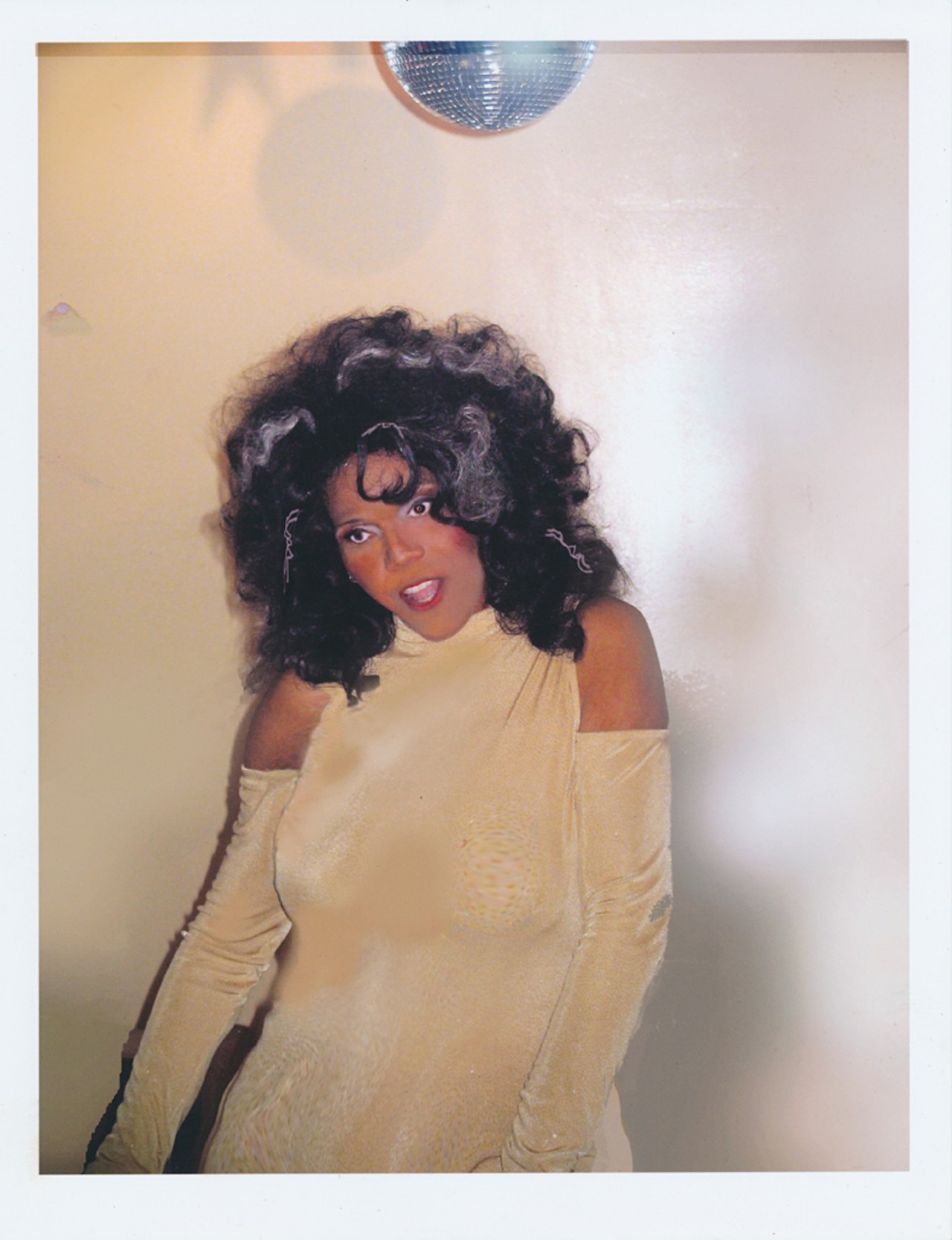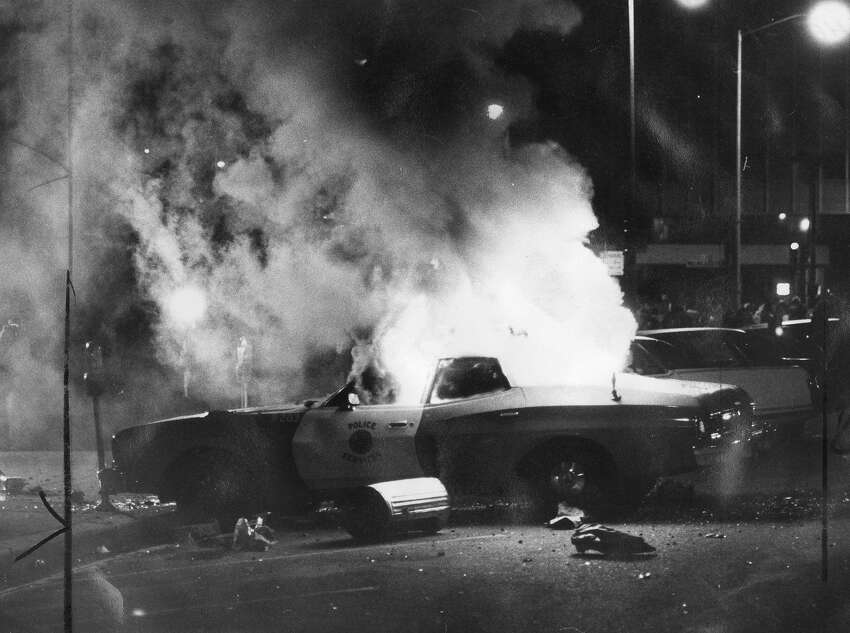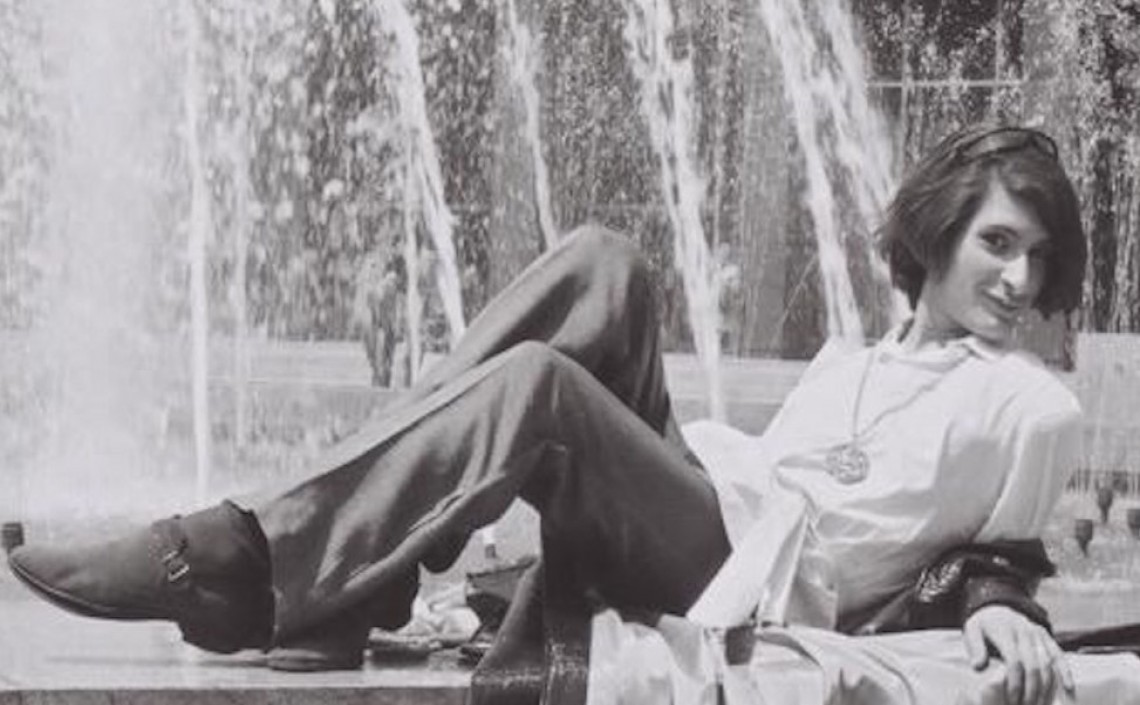Last June, as you may recall, I did a whole series on the Heroes of Stonewall. Obviously, it was a massive riot, I couldn’t cover everyone who was there in just a month. I left out someone incredibly important (several someones), and I can’t think of a better time to cover the story of another transgender person of color who heroically led us at the Stonewall Riots, and afterwards, than right now — when the Trump administration is attacking the healthcare rights of transgender people.

Miss Major Griffin-Gracy was born in Chicago on October 25, 1940 in the south side of Chicago at St. Luke’s Hospital. She was assigned to the male gender at birth. It didn’t last too long — while she was still fairly young, she discovered the drag ball scene and began participating regularly. She later explained that, without the terminology we have today existing, she did not realize that she and her peers were questioning their gender identities. But they were, and Miss Major was fairly open about it. Her parents attempted to curb this, but eventually just kicked her out.
Afterwards, she was homelessness — getting by as best she could through sex work and the occasional theft. She transitioned, using hormones she purchased on the black market — something that became a booming business following the very public transition of Christine Jorgensen. She briefly had a job as a secretary for the Mattachine Society, but even that didn’t last too long.
After a run in with the law, and a six month bout in a mental institution, Miss Major moved to New York City. She became a performer at the famous Jewel Box Revue, as well as the Cherries and the Powder Puff Revue. (As an aside, I’m definitely a 90’s kid because I definitely first thought that was “Powerpuff” but it isn’t.) During these years she experimented with a handful of names, but settled on the one her parents had given her: Major. She simply added the word “Miss” in front of it.
Although many of the gay bars would not let her in, Miss Major became a frequent customer at the Stonewall Inn — probably at least in part because of her and Stormé DeLarverie‘s shared association with the Jewel Box Revue. She was there on the night of June 27, 1969 and stayed late enough to be present when the police raided the bar. She participated in the rioting on that first night, until she spit in the face off one of the police officers — he responded by knocking her out. She awoke the next day in a prison cell. While she was in police custody, her jaw was broken.
After the riot, Miss Major was deeply changed by the murder of a Puerto Rican transgender friend of hers known as Puppy. Despite plenty of evidence, the police ruled the murder was a suicide. She realized that transgender women of New York could not depend on anyone but each other — she began to build a network so that they could help protect each other. This was especially true of sex workers, who started trying to get their “johns” to exit the cars so that all of the girls could see them — just in case a girl never came back from a job.
She was arrested in 1970 for burglary after a safe-breaking job went wrong, and spent four years at Clinton Correctional Facility in Dannemora, New York. He had a great deal of respect for Miss Major, and her gender identity, and he talked to her about how she could help her community. She spent a good amount of time in solitary confinement — she was imprisoned with men, and every time a fight broke out between her and any other inmate, she was the one who was punished. She was paroled twice — but both times the parole was revoked when her parole officer reported her for deviant behavior (once was for adopting a more feminine appearance by shaving her face, and the second time was for “entering a deviant bar.”) While incarcerated, she communicated regularly with Frank “Big Black” Smith — who had been in charge of security at the Attica Correctional Facility Riots of 1971. When she was finally released in 1974, she took those lessons to heart.
In 1978, Miss Major’s long-time girlfriend gave birth to their son Christopher. Miss Major decided the life she’d built in New York was not one well-suited for raising a child, she secured sole custody of Christopher and moved to San Diego. She would eventually adopted three other boys — runaways she met at a park. This was the start of a growing chosen family that still rallies around Miss Major to this day. She started working at a food bank and attempted to help transgender people who were in prison or recovering from addiction, but as the AIDS epidemic began to ravage the queer community of California, Miss Major turned her attention to helping provide healthcare and performing funerals. The silver lining for the epidemic, Miss Major later recalled, was that many transgender people — especially women — were able to find legitimate, legal jobs for the first time, even if that job was the heartbreaking task of providing healthcare to doomed queer people no one else wanted to touch.

In the mid 90’s, Miss Major moved to San Francisco. She continued her HIV/AIDS activism, including serving with the Tenderloin AIDS Resource Center (TARC). As part of that organization, she ensured they had a refrigerator available so that homeless people could store food and medications at the center. She fought for them to acquire a washing machine and a dryer so homeless people in the community could do their laundry.
In 2003, Miss Major — who’s activism was returning more to its original focus on incarcerated transgender people — joined the newly founded Transgender Gender Variant Intersex Justice Project (TGI Justice Project), and became the Executive Director. In this position, she is one of an estimated five people in the United States that is working full time towards equal transgender rights in prison. She has testified about human rights violations towards transgender people in prisons before both the California State Assembly and the United Nations Human Rights Committee in Geneva. One particular focus of her activism is on the healthcare that transgender inmates receive — they are sometimes denied everything from hormones to routine medical examinations. But, as she notes, transgender inmates face abuse in almost every aspect of prison life, and are overrepresented in prison populations (where they are typically housed with the incorrect gender).

She has decried the gay rights movement for ignoring the plight of transgender people as they fought for equality — a sentiment that was shared deeply by Sylvia Rivera and Marsha P. Johnson. (And frankly, shared by me too. It’s hard to argue with.) But Miss Major herself has continued to fight tirelessly for those the rest of society wanted to ignore. She’s known to have said: “Just because there’s this umbrella, LGBT, we’re all grouped together. But guess what? Someone poked a hole in the umbrella and the girls are still getting wet.”
And recently, although those sentiments still largely hold true, Miss Major herself has finally been getting attention for her decades of work. In 2014, Miss Major was made the Grand Marshall of the San Francisco Pride Parade. In 2015, the documentary MAJOR! was released, following Miss Major’s life as an activist.
More recently, in 2018 Miss Major has relocated from California to Little Rock, Arkansas. There, she has founded the Griffin-Gracy Historical Retreat and Educational Center — also known the House of GG. On July 4, 2019 Miss Major suffered a stroke — but survived and is recovering well enough that she has been engaged in Black Lives Matters protests within the past month according to her Instagram. If you want to help with her continued recovery or with her continued activisim for transgender and gender non-conforming people, a website has been set up for donations.

While articles about Miss Major’s life and activism are plentiful, they all have anecdotes of Miss Major saving lives by simply being there, lending an ear, or offering advice and a good book. It’s little wonder so many have rallied around her, now often calling her “Mama Major” or “Grandma Major.” Janet Mock, a writer, director, and producer — one of the creators of the TV show Pose, once said, “Without Miss Major’s contributions and work, I would not exist.” There are countless transgender people in this country who say the same. That’s a tremendous legacy, but when asked what she hoped her legacy would be in a 2018 interview she said: “If ain’t right, fucking fix it, whatever it takes.”
And if that’s not a mantra for the whole world to adopt, I don’t know what is.
(PS, Miss Major also has a Facebook page you should totally follow.)







 An important fact about the
An important fact about the  Working as a Navy cook, stationed in Brooklyn, Garvin began coming out of the closet. Coming out proved quite difficult, especially given his religious upbringing. Drunk and off the base one night, Garvin sought out the only other gay man his age that he knew of — but he was soundly rejected. Reeling, Garvin attempted suicide and then called a psychiatrist who told him to admit himself to Bellevue Hospital. The Navy transferred him to St. Albans Naval Medical Hospital.
Working as a Navy cook, stationed in Brooklyn, Garvin began coming out of the closet. Coming out proved quite difficult, especially given his religious upbringing. Drunk and off the base one night, Garvin sought out the only other gay man his age that he knew of — but he was soundly rejected. Reeling, Garvin attempted suicide and then called a psychiatrist who told him to admit himself to Bellevue Hospital. The Navy transferred him to St. Albans Naval Medical Hospital. Although on his first visit, Garvin was mostly shocked to see men dancing together, he became a regular and even dated the main doorman (“Blonde Frankie“) for a time. Though he was initially living on the streets and hustling for a living — an experience he would carry with him the rest of his life — he ultimately found his way into living in what David Carter describes in his book Stonewall: The Riots That Sparked the Gay Revolution as a “gay hippie commune.” Garvin began smoking pot, and started selling LSD at Stonewall.
Although on his first visit, Garvin was mostly shocked to see men dancing together, he became a regular and even dated the main doorman (“Blonde Frankie“) for a time. Though he was initially living on the streets and hustling for a living — an experience he would carry with him the rest of his life — he ultimately found his way into living in what David Carter describes in his book Stonewall: The Riots That Sparked the Gay Revolution as a “gay hippie commune.” Garvin began smoking pot, and started selling LSD at Stonewall.
 Most of the people who were at the
Most of the people who were at the 
 In 1964, Rodwell returned to New York and devoted himself to activism for the “homophile” community (as we called ourselves then — I am so glad we don’t use that term anymore). He was volunteering with the Mattachine Society — using his legal name, which was a rarity in that time — and even serving as their vice president. He founded the Mattachine Young Adults organization, and was an early member of the East Coast Homophile Organizations (ECHO) — which coordinated various homophile groups from around the eastern seaboard. On September 19, he and several other notable activists including Randy Wicker, Jefferson Poland, and Renee Cafiero staged a protest against the military’s exclusion of gay service members — and the practice of dishonorably discharging those who were found out. This is officially recognized as the first organized LGBTQ+ protest in United States history (though I suspect there were some before that we just don’t acknowledge).
In 1964, Rodwell returned to New York and devoted himself to activism for the “homophile” community (as we called ourselves then — I am so glad we don’t use that term anymore). He was volunteering with the Mattachine Society — using his legal name, which was a rarity in that time — and even serving as their vice president. He founded the Mattachine Young Adults organization, and was an early member of the East Coast Homophile Organizations (ECHO) — which coordinated various homophile groups from around the eastern seaboard. On September 19, he and several other notable activists including Randy Wicker, Jefferson Poland, and Renee Cafiero staged a protest against the military’s exclusion of gay service members — and the practice of dishonorably discharging those who were found out. This is officially recognized as the first organized LGBTQ+ protest in United States history (though I suspect there were some before that we just don’t acknowledge). In 1966, Rodwell was ejected from a bar called Julius’ for wearing a pin that read “Equality for Homosexuals.” On April 21, with the help of John Timmons and Mattachine president Dick Leitsch, Rodwell held a “sip-in” at the bar. This was specifically to protest a rule by State Liquor Authority that prohibited homosexuals from gathering in places that served alcohol. Rodwell and his cohorts held that the rule encouraged bribery and corruption amongst the police. The publicity from this sit-in led directly to that particular rule ending.
In 1966, Rodwell was ejected from a bar called Julius’ for wearing a pin that read “Equality for Homosexuals.” On April 21, with the help of John Timmons and Mattachine president Dick Leitsch, Rodwell held a “sip-in” at the bar. This was specifically to protest a rule by State Liquor Authority that prohibited homosexuals from gathering in places that served alcohol. Rodwell and his cohorts held that the rule encouraged bribery and corruption amongst the police. The publicity from this sit-in led directly to that particular rule ending. In order to try make the Mattachine Society more accessible, Rodwell proposed they open a storefront. When the idea was rejected, he cut his ties with the organization. In November of 1967, Rodwell opened the Oscar Wilde Memorial Bookshop — the country’s first store that focused on queer authors. The store was so named because Oscar Wilde was the most notable homosexual he could think of and he wanted absolutely not confusion about what the store was all about. The place functioned as more than just a store — Rodwell also envisioned it as a community center that didn’t have age restrictions and didn’t rely on alcohol (or the organized crime families that owned most of the gay bars in the city). To that end, he found the Homophile Youth Movement in Neighborhoods (HYMN) out of the bookshop, and led their rallies in that year. In 1968, he started publishing their periodical HYMNAL. Harvey Milk — now friends with Rodwell — was a frequent customer of the store, and it would later be the inspiration his own shop/community center/campaign headquarters Castro Camera in San Francisco. Rodwell also met Fred Sargeant at his store. Sargeant became heavily involved in HYMN and a romantic relationship blossomed.
In order to try make the Mattachine Society more accessible, Rodwell proposed they open a storefront. When the idea was rejected, he cut his ties with the organization. In November of 1967, Rodwell opened the Oscar Wilde Memorial Bookshop — the country’s first store that focused on queer authors. The store was so named because Oscar Wilde was the most notable homosexual he could think of and he wanted absolutely not confusion about what the store was all about. The place functioned as more than just a store — Rodwell also envisioned it as a community center that didn’t have age restrictions and didn’t rely on alcohol (or the organized crime families that owned most of the gay bars in the city). To that end, he found the Homophile Youth Movement in Neighborhoods (HYMN) out of the bookshop, and led their rallies in that year. In 1968, he started publishing their periodical HYMNAL. Harvey Milk — now friends with Rodwell — was a frequent customer of the store, and it would later be the inspiration his own shop/community center/campaign headquarters Castro Camera in San Francisco. Rodwell also met Fred Sargeant at his store. Sargeant became heavily involved in HYMN and a romantic relationship blossomed. The next day, Rodwell created a flyer — which HYMN helped him to disseminate through Greenwich Village — that read “Get the Mafia and the Cops Out of Gay Bars.” The flyers helped encourage further protests the next several nights — protests Rodwell participated in as well.
The next day, Rodwell created a flyer — which HYMN helped him to disseminate through Greenwich Village — that read “Get the Mafia and the Cops Out of Gay Bars.” The flyers helped encourage further protests the next several nights — protests Rodwell participated in as well.
 In 1978 Rodwell formed Gay People in Christian Science (GPICS) with Ray Spitale, Bob McCullogh, and Bob Mackenroth. While they were not the only gay Christian Science organization in the country, they were the only one actively challenging the church’s policies — actively challenging the excommunication of three of their members. This quickly became Rodwell’s primary focus for his activism. GPICS created an eight-page pamphlet entitled “Gay People in Christian Science?” which they proceeded to mail to every Christian Science church, college organization, and practitioner that they could find. Overall, they mailed out 8,000 copies. They then made plans to hand out the pamphlets at the 1980 Annual Meeting of the Church of Christ, Scientist in Boston. To organize this in the least offensive way possible, Rodwell alerted security for the event of their intentions.
In 1978 Rodwell formed Gay People in Christian Science (GPICS) with Ray Spitale, Bob McCullogh, and Bob Mackenroth. While they were not the only gay Christian Science organization in the country, they were the only one actively challenging the church’s policies — actively challenging the excommunication of three of their members. This quickly became Rodwell’s primary focus for his activism. GPICS created an eight-page pamphlet entitled “Gay People in Christian Science?” which they proceeded to mail to every Christian Science church, college organization, and practitioner that they could find. Overall, they mailed out 8,000 copies. They then made plans to hand out the pamphlets at the 1980 Annual Meeting of the Church of Christ, Scientist in Boston. To organize this in the least offensive way possible, Rodwell alerted security for the event of their intentions. Gay nightlife in 1969 was something quite different from what it is today for a couple of reasons. One of those reasons was that they tended to be owned by organized crime families, rather than by actual queer people. While this didn’t usually work out in the favor of the customers, it was just fine with Tammy Novak.
Gay nightlife in 1969 was something quite different from what it is today for a couple of reasons. One of those reasons was that they tended to be owned by organized crime families, rather than by actual queer people. While this didn’t usually work out in the favor of the customers, it was just fine with Tammy Novak.

 I wish this article was going to be longer, but I have honestly scoured the internet for more information on this person, and I have almost nothing. Nevertheless, Jackie Hormona contributed the
I wish this article was going to be longer, but I have honestly scoured the internet for more information on this person, and I have almost nothing. Nevertheless, Jackie Hormona contributed the 

 In 1955, began touring as the MC and the only drag king in the Jewel Box Revue — the first racially integrated drag show, appearing regularly at the Apollo Theater. Audience members would attempt to “guess the girl,” ultimately being surprised during a song entitled “Surprise with a Song” that the girl was actually DeLarverie, who was often sporting a mustache and a tailored suit. DeLarverie was noted particularly for having a strinkingly handsome appearance as a boy — which inspired a lot of other lesbians of the time to begin wearing traditionally masculine clothing as well. Her career as a performer would be explored in the 1987 documentary Stormé: The Lady of the Jewel Box.
In 1955, began touring as the MC and the only drag king in the Jewel Box Revue — the first racially integrated drag show, appearing regularly at the Apollo Theater. Audience members would attempt to “guess the girl,” ultimately being surprised during a song entitled “Surprise with a Song” that the girl was actually DeLarverie, who was often sporting a mustache and a tailored suit. DeLarverie was noted particularly for having a strinkingly handsome appearance as a boy — which inspired a lot of other lesbians of the time to begin wearing traditionally masculine clothing as well. Her career as a performer would be explored in the 1987 documentary Stormé: The Lady of the Jewel Box.
 Of all of the heroes of the LGBTQIA+ community who fought for us at the Stonewall Riots, I personally think that Sylvia Rivera may have had the most important impact on our community — however, she may also be the most controversial. Though we view her as a hero and champion for our community now, she was not always looked on so fondly.
Of all of the heroes of the LGBTQIA+ community who fought for us at the Stonewall Riots, I personally think that Sylvia Rivera may have had the most important impact on our community — however, she may also be the most controversial. Though we view her as a hero and champion for our community now, she was not always looked on so fondly.
 Despite her friction with many queer organizations, Rivera was an active member of the Metropolitan Community Church of New York, and often helped to feed the poor and homeless through their food pantry. In 2000, Rivera traveled to Rome, Italy for WorldPride. There she was called “the mother of all gay people” and participated in the Millenium March. In 2001, Rivera attempted to revive STAR as a political organization — changing the “T” to stand for “Transgender,” which was beginning to come into common usage. The new STAR, under Rivera’s leadership, pushed for a trans-inclusive New York State Sexual Non-Discrimination Act, as well as the New York City Transgender Rights Bill. They also fought for justice for Amanda Milan, a transgender woman who was murdered in 2000.
Despite her friction with many queer organizations, Rivera was an active member of the Metropolitan Community Church of New York, and often helped to feed the poor and homeless through their food pantry. In 2000, Rivera traveled to Rome, Italy for WorldPride. There she was called “the mother of all gay people” and participated in the Millenium March. In 2001, Rivera attempted to revive STAR as a political organization — changing the “T” to stand for “Transgender,” which was beginning to come into common usage. The new STAR, under Rivera’s leadership, pushed for a trans-inclusive New York State Sexual Non-Discrimination Act, as well as the New York City Transgender Rights Bill. They also fought for justice for Amanda Milan, a transgender woman who was murdered in 2000.